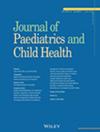Diagnostic accuracy of Ages and Stages Questionnaire, Third Edition to identify abnormal or delayed gross motor development in high-risk infants
Abstract
Aim
To investigate the diagnostic accuracy of parent-completed Ages and Stages Questionnaire, Third Edition (ASQ-3) to identify abnormal or delayed gross motor development in infants born less than 1000 g or less than 28 weeks gestation.
Methods
Prospective cohort study of high-risk infants comparing ASQ-3 as the index test with concurrent score on Alberta Infant Motor Scale (AIMS) as the reference standard, at 4-, 8- and 12-month corrected (post-term) age. Reference standard positivity cut-offs were ‘Abnormal motor development’ (AIMS Clinical Range) and ‘Motor delay’ (AIMS score >1 SD below mean, not captured in Clinical Range).
Results
Participating infants (n = 191) had mean gestational age (95% confidence interval (CI)) 26.8 weeks (26.6–27.1) and mean birthweight (95% CI) 870 g (844–896). AIMS rated 51%, 31% and 23% of infants as having ‘Abnormal motor development’ and 12%, 28% and 13% with ‘Motor delay’, at 4, 8 and 12 months, respectively. Diagnostic accuracy of ASQ-3 to identify abnormal motor development was acceptable for older infants only if ‘Monitor’ cut-off was used: sensitivity (95% CI) 33% (23–44), 86% (73–95) and 80% (63–92) and specificity (95% CI) 84% (74–92), 76% (66–84), and 76% (67–83) at 4, 8 and 12 months, respectively. ASQ-3 sensitivity to identify motor delay was low.
Conclusions
ASQ-3 has poor sensitivity to identify abnormal or delayed motor development at 4 months. Using the ‘Monitor’ cut-off improves the diagnostic accuracy of ASQ-3 for identification of older infants with abnormal motor development who are at high risk of motor disability. However, ASQ-3 has poor sensitivity to identify motor delay. Clinical motor assessment of high-risk infants is recommended, particularly in early infancy.

 求助内容:
求助内容: 应助结果提醒方式:
应助结果提醒方式:


